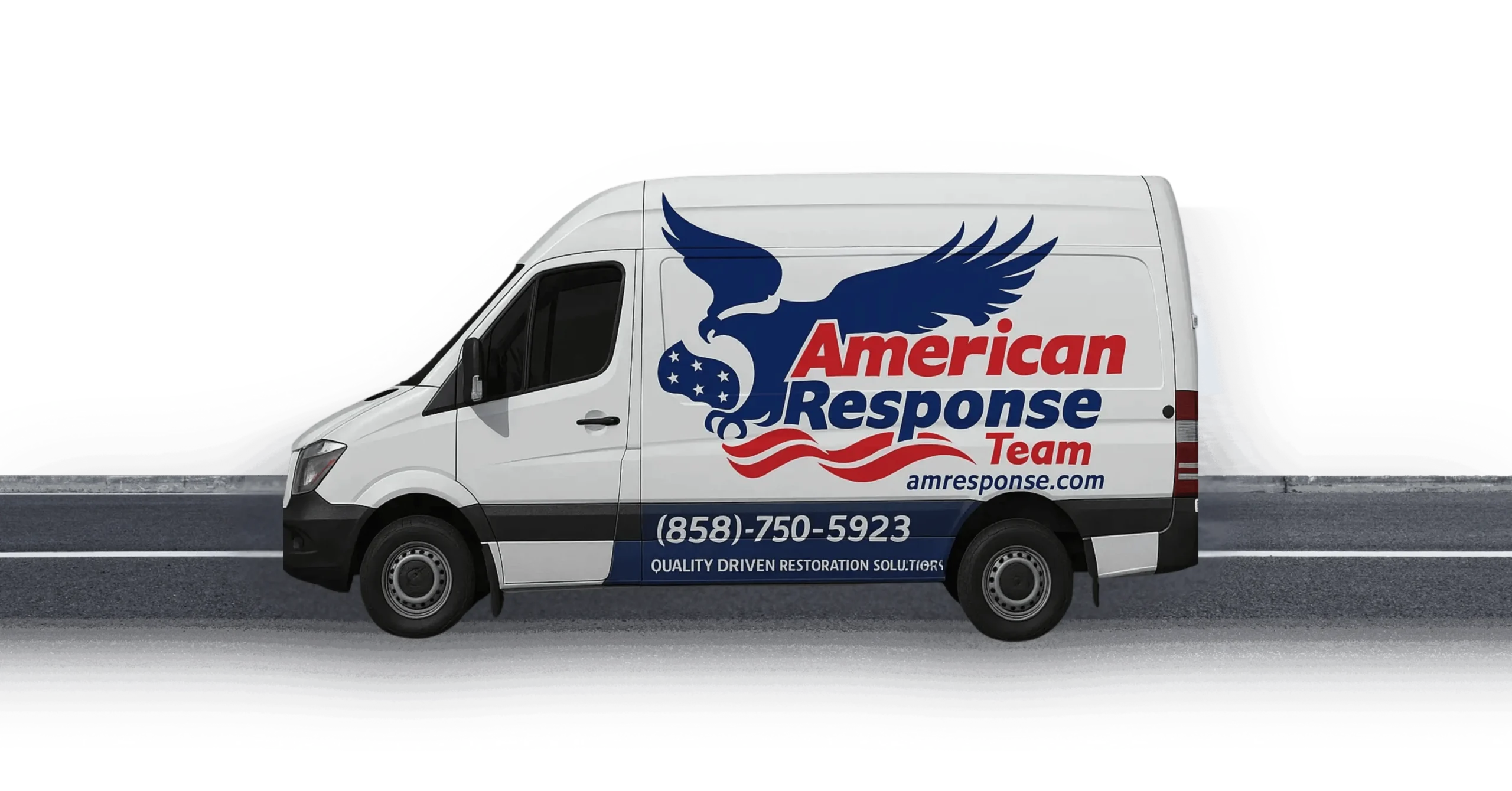Can carpet be saved after a flood? This is one of the first questions homeowners ask when they see water covering their floors. The answer isn’t always simple. Sometimes carpet can be saved, but other times it needs to be thrown away completely. Understanding what determines whether your carpet can be saved will help you make the right decision quickly.
What Type of Water Flooded Your Carpet?
The type of water that flooded your carpet is the most important factor in deciding if your carpet can be saved after a flood. Clean water from broken pipes or rain gives your carpet the best chance of survival. Gray water from washing machines or dishwashers is more dangerous but might still allow carpet restoration.
Black water from sewage or flooding is the worst type. According to the IICRC S500 Standard, carpets exposed to black water should almost always be thrown away. This water contains bacteria and other harmful germs that can make you sick. Professional sewage cleanup services know how to handle these dangerous situations safely.
Even clean water can become contaminated if it sits too long. Water that starts clean can pick up dirt, chemicals, and bacteria as it spreads through your home. This is why acting fast is so important when asking can carpet be saved after a flood.
How Long Has the Carpet Been Wet?
Time is critical when deciding if carpet can be saved after a flood. The EPA states that mold can start growing on wet materials within 24-48 hours. Once mold starts growing in your carpet, saving it becomes much harder and more expensive.
Carpet that has been wet for less than 24 hours has the best chance of being saved. Between 24-48 hours, the chances get lower. After 48 hours, most carpet experts recommend throwing the carpet away, especially if you can smell musty odors.
The carpet padding underneath almost always needs to be replaced, even if the carpet itself can be saved. Padding soaks up water like a sponge and holds moisture longer than the carpet fibers. This makes it a perfect place for mold and bacteria to grow.
Can Carpet Be Saved After a Flood? 8 Key Factors to Consider
Several factors work together to determine if carpet can be saved after a flood. Understanding these factors will help you make a smart decision about your flooded carpet:
The age and quality of your carpet matters. Newer, higher-quality carpets have a better chance of surviving floods. Cheap or old carpets might not be worth the cost of professional cleaning. Sometimes replacing the carpet costs less than trying to save it.
The thickness of your carpet also plays a role. Thin carpets dry faster than thick, plush carpets. Loop pile carpets often survive floods better than cut pile carpets because they hold less water and dry more quickly.
Professional Assessment: When to Call Experts
Professional restoration companies can tell you if carpet can be saved after a flood better than anyone else. They have special equipment to test moisture levels and check for contamination. They can also see damage that you might miss.
Companies like American Response Team use moisture meters and infrared cameras to find hidden water damage. Watch our process to see how professionals assess flood damage. They can make decisions based on industry standards and years of experience.
Professional flood restoration teams also know about health risks that homeowners might not understand. They can tell you when carpet is too dangerous to keep, even if it looks okay on the surface.
Insurance Coverage: What Pays for Carpet Replacement?
Understanding insurance coverage helps you decide if carpet can be saved after a flood or if replacement makes more sense financially. Most homeowner’s insurance covers sudden water damage like burst pipes, but they don’t cover flood damage from outside water.
For actual flood damage, you need separate flood insurance through the National Flood Insurance Program. However, it’s important to know that FEMA assistance may help repair subfloors but not floor covering like carpet.
Some insurance policies cover the cost of professional carpet cleaning after water damage. Others only pay for replacement. Check your policy details or call your insurance company to understand what’s covered before deciding whether to clean or replace your carpet.
Health Risks from Keeping Flood-Damaged Carpet
Health concerns are a major factor when asking can carpet be saved after a flood. Wet carpets can grow dangerous mold and bacteria that cause breathing problems, skin irritation, and other health issues. People with asthma or allergies are especially at risk.
The EPA warns that flood water can make indoor air unhealthy because wet materials often become moldy. Carpet fibers can trap mold spores, bacteria, and other contaminants that are hard to remove completely.
If anyone in your family has health problems, it’s usually safer to replace flood-damaged carpet rather than try to save it. The cost of replacement is often less than the cost of treating health problems caused by contaminated carpet.
DIY vs Professional Carpet Restoration
Some homeowners wonder if they can save flood-damaged carpet themselves. While small areas of clean water damage might be manageable, most flood situations need professional help. Deciding if carpet can be saved after a flood requires specialized knowledge and equipment.
Professional restoration companies have powerful water extraction equipment, industrial dehumidifiers, and antimicrobial treatments. They also understand proper safety procedures for different types of water damage. Learn about mistakes homeowners make after water damage to avoid common problems.
If you decide to attempt DIY carpet restoration, only do it with clean water damage that happened less than 24 hours ago. Use a wet vacuum to remove water, then rent industrial fans and dehumidifiers to dry the area completely. However, you should still have professionals inspect the results.
When Carpet Cannot Be Saved After a Flood
Sometimes the answer to can carpet be saved after a flood is definitely no. Carpet exposed to sewage or flood water should almost always be discarded. The same goes for carpet that has been wet for more than 48 hours or shows signs of mold growth.
Carpet with strong musty odors usually can’t be saved, even with professional cleaning. The smell often means mold or bacteria has grown deep into the carpet fibers and padding. No amount of cleaning will completely remove these contaminants.
Very old or low-quality carpet often isn’t worth saving either. The cost of professional restoration might be more than replacement cost. In these cases, replacement with water-resistant flooring might be a better long-term investment.
Steps for Carpet Restoration After Floods
If professionals determine that carpet can be saved after a flood, the restoration process follows specific steps. First, all water must be extracted as quickly as possible. Standing water should be removed within hours, not days.
Next, the carpet padding almost always needs to be removed and thrown away. Even if the carpet can be saved, the padding usually cannot. New padding will be installed after the carpet is cleaned and dried.
The carpet is then lifted and professionally cleaned with antimicrobial solutions. It must be dried completely before reinstallation. The subfloor underneath also needs to be dried and treated to prevent mold growth. This process can take several days or even weeks.
Alternative Flooring Options After Flood Damage
When carpet cannot be saved after a flood, many homeowners choose more water-resistant flooring options. Luxury vinyl plank, tile, and polished concrete don’t hold water like carpet does. These materials are easier to clean and dry if flooding happens again.
Some homeowners upgrade to area rugs instead of wall-to-wall carpet. Area rugs can be removed and cleaned more easily if water damage occurs. They also cost less to replace than installing new carpet throughout the entire room.
Professional reconstruction services can help you choose the best flooring options for your home and budget. They understand which materials work best in flood-prone areas and can help prevent future damage.
Preventing Future Carpet Flood Damage
The best answer to can carpet be saved after a flood is to prevent floods in the first place. Regular maintenance of plumbing, gutters, and drainage systems helps prevent water damage. Install water leak detectors near appliances and water heaters.
Consider leak detection services to find hidden plumbing problems before they cause major damage. Fix small leaks quickly before they turn into big floods that destroy your carpet and other belongings.
In flood-prone areas, think about installing carpet only in upper levels of your home. Keep lower levels with harder flooring materials that can survive occasional flooding. This approach protects your investment while still giving you comfortable carpet where you need it most.
Cost Comparison: Restoration vs Replacement
The cost often determines whether carpet can be saved after a flood from a practical standpoint. Professional carpet restoration typically costs $3-7 per square foot, depending on the damage severity and type of water involved.
New carpet installation ranges from $2-12 per square foot, depending on carpet quality and padding choices. Sometimes replacement actually costs less than restoration, especially for older or lower-quality carpets.
Don’t forget to factor in health risks and potential future problems when comparing costs. Carpet that seems successfully restored might develop mold or odor problems later, requiring additional treatment or eventual replacement anyway.
Emergency Response: Acting Fast to Save Your Carpet
Quick action gives you the best chance when asking can carpet be saved after a flood. Call professional restoration services immediately, even if you’re not sure about the extent of damage. Most companies offer free assessments and can guide you through the decision-making process.
While waiting for professionals, remove as much standing water as possible with a wet vacuum or mop. Move furniture off the wet carpet to prevent further damage. Don’t walk on the wet carpet more than necessary, as this can push water deeper into the padding.
Turn on fans and dehumidifiers if you have them, but understand that this is just temporary help. Professional equipment is much more powerful and effective for drying wet carpets completely.
Making the Final Decision About Your Flood-Damaged Carpet
Deciding if carpet can be saved after a flood requires balancing many factors: the type of water, how long it’s been wet, the carpet’s age and quality, your family’s health needs, and the costs involved. When in doubt, prioritize health and safety over saving money.
Professional restoration companies can give you honest assessments based on industry standards and experience. They can also work with your insurance company to ensure you get proper coverage for your situation. Understanding different types of water damage for insurance purposes helps with this process.
Remember that attempting to save carpet that should be replaced can lead to bigger problems later. Mold growth, persistent odors, and health issues often cost more in the long run than immediate replacement would have cost.
Get Expert Help with Flood-Damaged Carpet
Don’t guess about whether your carpet can be saved after a flood. American Response Team has helped thousands of San Diego homeowners make these difficult decisions. Our certified technicians can quickly assess your carpet and give you honest recommendations based on industry standards.
We work with all insurance companies and understand the complexities of flood damage claims. Our goal is to help you make the best decision for your family’s health and your budget. We provide detailed documentation that insurance companies accept.
Time is critical when dealing with flood-damaged carpet. Contact us immediately for emergency flood restoration services throughout San Diego County. We serve La Jolla, Vista, Carlsbad, Oceanside, Escondido, and surrounding areas 24/7. Call (619) 893-3473 now to find out if your carpet can be saved after a flood.

